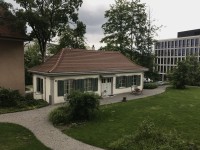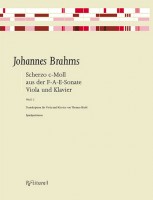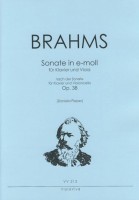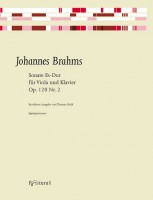
Johannes Brahms in Switzerland |
The Musikkollegium Winterthur ended its concert season with a Brahms-Festival. Entire work cycles were performed. Furthermore, one could walk through Winterthur on Brahms’ tracks and learning about his painter friends Böcklin and Hodler in the Kunst Museum Winterthur.

Biedermann» carried out
Winterthur «on Brahm's
Tracks».
«Free yet lonely»
In Winterthur, Brahms liked to stay in the house Schanzengarten, which was owned by Rieter-Biedermann’s family. Rieter-Biedermann’s wife looked after him, and daughter Ida even helped him finding suitable bible passages for his German Requiem in 1866. This marvelous work was mostly written in Winterthur and in Zürich. Clara Schumann had already felt on the first visit to Rieter-Biedermann’s house in 1856, that daughter Ida would be Brahms’ ideal wife. The story took a different turn though: «Free yet lonely» was Brahm’s philosophy of life.

Publisher Biedermann became new
renovated.

Johannes Brahms lived and composed.
The Brahms-Festival of the Musikkollegium Winterthur resembles this multifaceted relationship of Brahms with Winterthur and Switzerland. For example through the performance of the four symphonies, the two piano concertos, the three violin sonatas or the German Requiem, as well as through the promenade «On Brahms' Tracks in Winterthur» or a tour in the Kunst Museum Winterthur, about Brahm’s painter friends Arnold Böcklin and Ferdinand Hodler. The influence of Winterthur’s Brahms-Festival exceeds the city by far – reaching up to Meiningen in Southern Thüringen. Brahms was a frequent guest conductor, performing his own works with the Meininger Hofkapelle, creating an actual Meininger Brahms-tradition. Brahms though of the conductor of this Hofkapelle as the best interprete for his symphonies, and kept giving advice on musical interpretation.

unveiled the plaque
commemorating
Johannes Brahms.
I’d like to make the reader aware of another lovely rarity. In a Midi Musical, Brahms’ first symphony – the one containing the famed alphorn solo from the Bern alps – could be heard in an edition for piano with four hands, arranged by Brahms himself. On the piano: the renowned piano duo Adrienne Soós and Ivo Haag. Obviously, Brahms appreciated his piano rendition: «Das Kettermäng [à quatre mains] ist eine Pracht!»
(From the program, with permission – the festival took place from May 29 – June 2 2019 in Winterthur. Pictures: Mark Walder)
Add comment

N E W
4 Zigeunerlieder from op. 103 for Viola and Piano

Scherzo C minor, from the F-A-E Sonata, WoO 2 for viola and piano

Sonata in E minor for viola and piano

Sonata in E flat major, op. 120, no. 2 for viola and piano
The challenge with shoulder rest and chinrest
As a viola teacher, I have been focusing for 20 years on the possibility to play viola while considering physiology. Through my experience with Alexander Technique and Yoga, I developed my perception on all angles and levers, which truly «make» the music.
» to the blog
 Do you don't want to miss any news regarding viola anymore? Our monthly viola news letter will keep you informed.
Do you don't want to miss any news regarding viola anymore? Our monthly viola news letter will keep you informed.» Subscribe to our viola letter for free
 Visit and like us on Facebook.
Visit and like us on Facebook.» Music4Viola on Facebook
